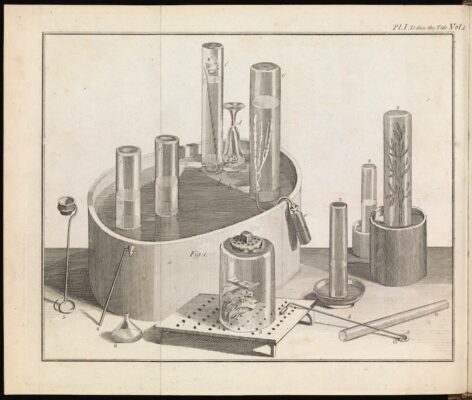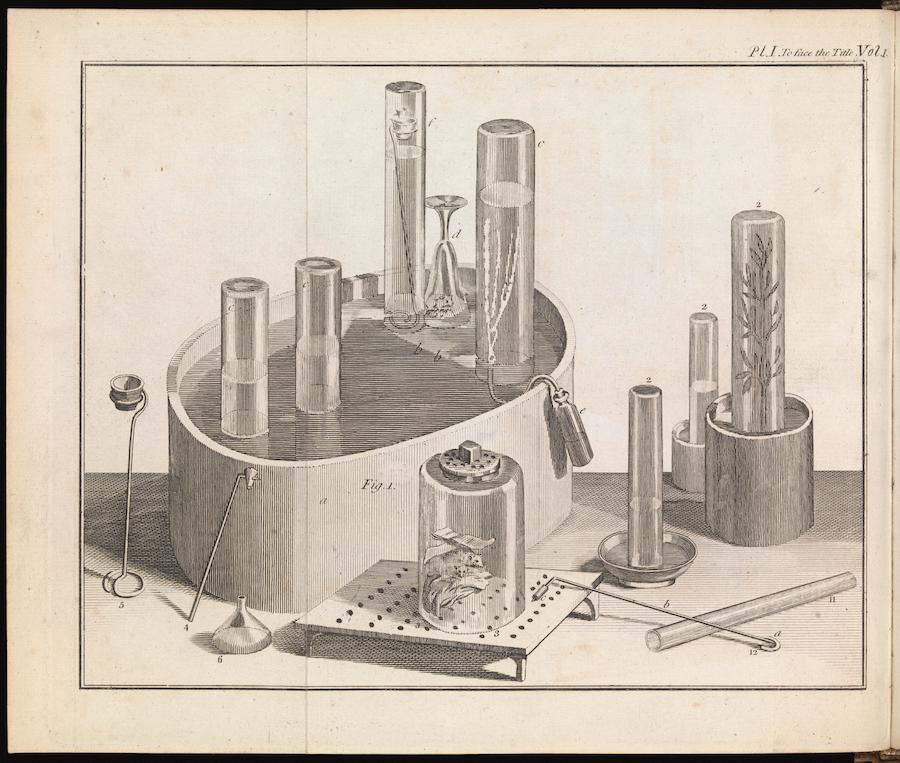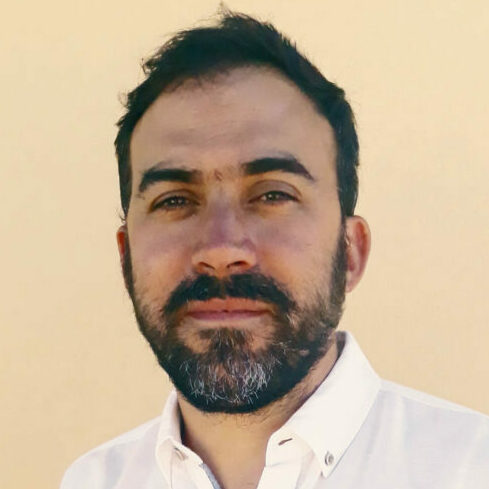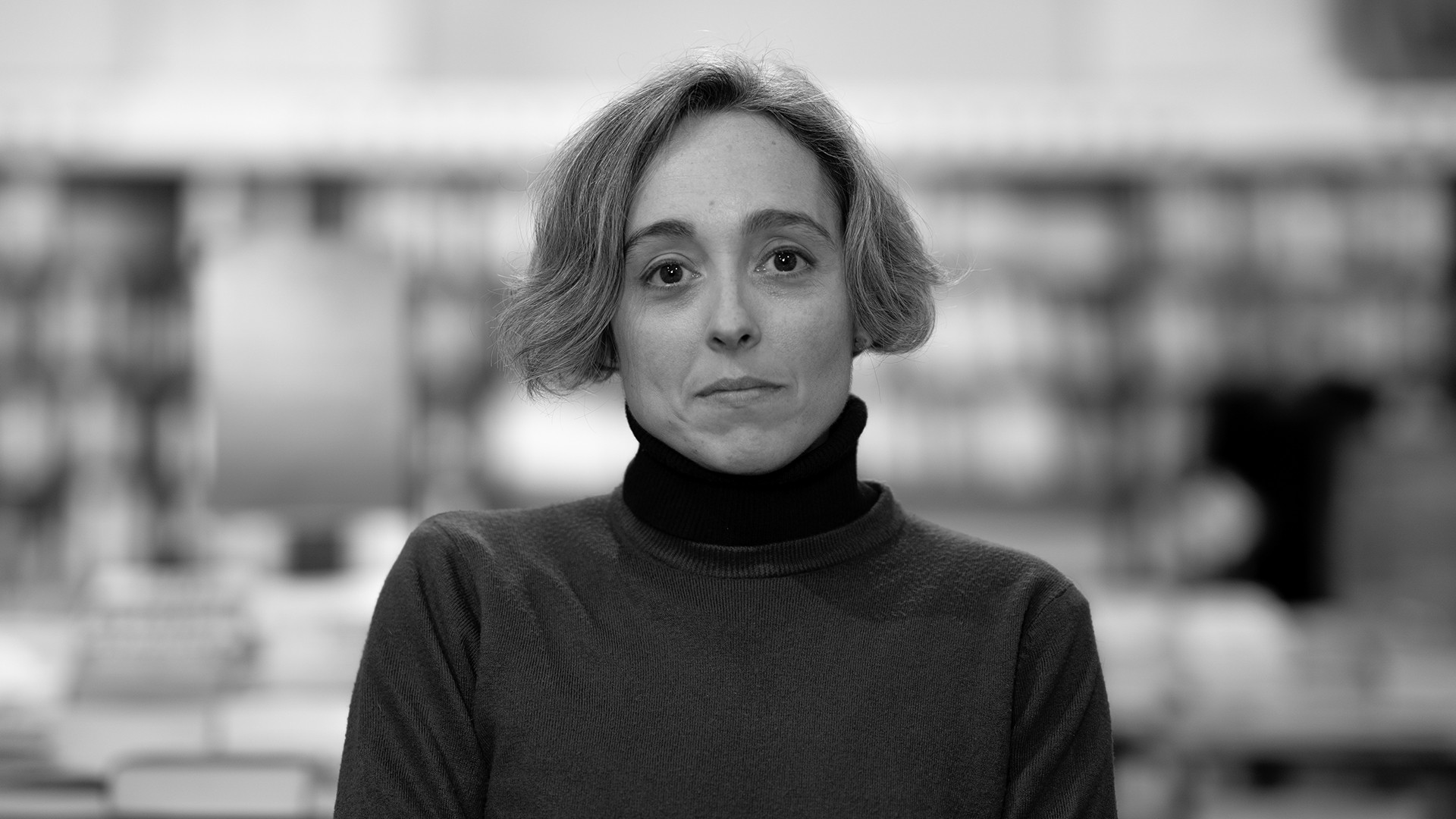Search
To search for an exact match, type the word or phrase you want in quotation marks.
A*DESK has been offering since 2002 contents about criticism and contemporary art. A*DESK has become consolidated thanks to all those who have believed in the project, all those who have followed us, debating, participating and collaborating. Many people have collaborated with A*DESK, and continue to do so. Their efforts, knowledge and belief in the project are what make it grow internationally. At A*DESK we have also generated work for over one hundred professionals in culture, from small collaborations with reviews and classes, to more prolonged and intense collaborations.
At A*DESK we believe in the need for free and universal access to culture and knowledge. We want to carry on being independent, remaining open to more ideas and opinions. If you believe in A*DESK, we need your backing to be able to continue. You can now participate in the project by supporting it. You can choose how much you want to contribute to the project.
You can decide how much you want to bring to the project.

Abelardo Gil-Fournier, Job Ramos, Olga Subirós and Ingrid Guardiola
An exchange of research and ideas between Abelardo Gil-Fournier and Job Ramos regarding the project AIR that will take place at the Bòlit, Center d’Art Contemporani de Girona, from February to May 2024, co-curated by Olga Subirós and Ingrid Guardiola.
A few months ago I parked a van full of plants on the street for a whole night. The next day I was going to take them to a mountain village. When I got into the van early in the morning, the closed space had its own microclimate. The interior of the windows dripped water, as if it were a beast that breathed. The plants worked together, they were one single thing, and the humidity of the air was an indication of their collective action.
This project about air in the Bòlit grew out of the research that I am carrying out in and with the Fundación Cerezales Antonino y Cinia, which basically revolves around the relationship between the natural environment, the body and knowledge. We wanted to talk about a moment in which the environmental crisis has made the impossibility of an abstract, a-historical and universal knowledge more evident than ever. We wanted to talk about the material basis of all forms of knowledge, and we wanted to relate this material base to the body. Knowledge as a body, the body as movement, and movement as a current. The word/idea that we take as a starting point to approach this relationship is the planet. On the one hand, it is an idea that makes energy equilibrium, solar radiation, atmospheric and ocean currents, trophic chains, and limits of vital resources and raw materials visible. But, on the other hand, it is also an idea that alienates as it is linked to a subject that imagines itself outside the planet, to a logic and logistics of domination of everything that is not Man, and to a closing of the imagination in which the possible is reduced to the probable.
An important part of this project revolves around air, air itself, understood in terms of its movement, from the currents and circulations that make up the atmosphere, both on the scale of the planet and on the scale of a domestic space. In the context of the Cerezales Foundation, we are trying to bring this circulation space within the scheme of materials that implies an exhibition process while keeping an ear to the ground. To what extent can we transfer to these other materials the idea that our life takes place immersed in planetary layers in continuous circulation that are, in a certain sense, ending? These circulations are a kind of structure, a life support infrastructure. If they stop, everything falls apart. In this sense, to what extent does the idea of circulation mediate the idea of air? When we perceive, feel or measure air, what other circulations are taking place? These issues are addressed in the Bòlit project.

Image related to Abelard Gil-Fournier’s work process, from the book of Joseph Priestley’s experiments, digitised by the Wellcome Collection in Public Domain: https://wellcomecollection.org/works/umwxygfa
To begin with, I want to review how the interest in what we are dealing with arose. I won’t name it, because this is the most relevant question for me. By naming it, we objectify something that is not an object. Problematizing this lack of a definition is what this project is all about. We could almost stop here. The proposal starts from perception, from certain preverbal states of being outdoors, from some more or less codified observation games that design a biased way of looking, an inverse approach, air as a liquid counter-mold of everything present.
When thinking about air, I am interested in attempting to code it as a subtraction or a remainder of everything that is manifest: air as everything but what is visible, a space to pass through. Instead of a definition, a possibility that deals with the implications of being in a certain place, taking shape in an ubiquitous place, where everything happens, in the air. This concerns not only objects and bodies, but also the voice that thinks, the body that feels and especially all that is strange, everything of which we doubt its existence. To put it bluntly, air is neo-pagan, air is strange, it is where everything that is strange remains.
The issue of air came from two places that perhaps are not connected or perhaps go together at this moment. The first comes from the importance of imagining and being in an open space, as opposed to being locked up, under cover, between walls or in front of a screen, that is, of being outdoors. I had a yearning for the outdoors, which became the initial driving force in the thesis I am working on, titled “Out in the Open: The Interstices Between Word and Place.” In it, I explore, from these interstices, the possibility of carrying out an academic investigation in the open air, outside, based on the question: “What does place imply?” This question is situated in relation to a field that has been a constant in my work, the inside/outside split.
In this outdoors investigation, an observation game that explores the air as a counter-mold accidentally arose. I began to practice it while walking. Instead of focusing on the given or manifest forms, on the set of objects, on the ordinary, I concentrated on that which was not occupied, that is, on the empty space. This idea/game of air as a counter-mold, as the negative of the present, began to redefine my approach to place. Air as a counter-mold is defined not only by the set of perceptible objects that occupy it, but also by what moves and what moves in it.
This perception game did not require movement, images or writing, nor any other fixed system, but rather it is a game played while looking backwards, and which affects the differences between imagining in a closed or in an open space. I try to investigate what it might mean to imagine from different places at the same time. What is imagined is a possibility inscribed in a place. Place is not like a map of what doesn’t move, place is always temporary, liquid, in transit.
From that idea, everything moved in different directions. In my work process, vagueness is necessary to deal with the direct non-translation between semantics and form. There are blind spots, unknown things. The question then arose as to whether I should visualize or simply avoid the temptation to formalize the idea of air as a counter-mold, since there is the fear of reifying, delimiting or making it finite. This doubt still persists.
There are a series of issues that I have begun to think about, such as the relationship between sound and air, where they are confused or merge. Sound shares the same ubiquity as air, but we rarely pay attention to it. I have also begun to explore forms of air by means of visual records, recording hair moved by the wind, plants that move themselves, and interactions between water and air.
As part of my practice I often turn to scientific devices from bygone eras. One of them, which came from my research at the Cerezales Foundation, is the use of sealed glass capsules, common in scientific experiments since the invention of vacuum pumps. Transparent containers such as spheres or inverted glass bells cut through the air, isolating a volume of air and introducing variations into it to allow people to observe what happens. In this way, what happened inside these sealed atmospheres gave rise to behaviors different from those observed outside the containers. For example, inside these containers, small animals such as mice or birds would stop breathing and die, and the flame of candles went out much more quickly.
A crucial experiment occurred when a plant was put into one of these transparent containers. Suddenly, that hostile space became habitable. Thanks to the respiration of the plant, the animals locked inside these capsules were able to survive, and the flame of the candles lasted much longer. The vegetable matter restored what the isolation created by the sealed container paralyzed. An idea of atmosphere appeared to be contained within that volume, one in which different respirations and chemical processes were balanced, a dynamic concept populated by circulations and exchanges. But with this device, the idea of atmosphere that emerged was also that of a volume that could be generated and observed from the outside, that could be sectioned and connected to logistical formulas, that is, something that could be, in a certain sense, made into a thing.
How to build an atmosphere? These are images from an old project called “Another Paradise without Sewage” that was an attempt in 2007, about 15 years ago, to build an atmosphere, a forest, light, and a space within the exhibition space. As ways of inhabiting and playing outdoors, it is related to the film A la intempérie (Outside, 2021) co-produced with Bòlit, that could have been filmed in that invented forest.
I have some other minimal mental images of what we are working on now: the counter-mold, the intangibleness of air and its possible manifestations, and the possibility of playing with the space of Sant Nicolau as air to be reproduced. The latter consists of inhabiting a double present, a strange reverberation I am interested in exploring, to manifest the presence of air in relation to the visitors of the exhibition. Reproducing that air has to do with the visitor’s body and realizing what they are doing there.
I am interested in spaces of negotiation. There is no clear separation between what is real and what is fictional. We are always in the middle, in a mixed space. This continuous space of negotiation between what is supposedly touched and what is not touched, what is artificial and what is not artificial, is where I like to be.
This dynamic of mediation usually ends up reifying air. In my case, I seek to avoid these dynamics by trying to avoid thinking about air as a noun and rather think about it in terms of the verbs that are in operation when that noun is mentioned. In the context of air, what verbs could these be? Sometimes the verbs are more technical, as we have said: acts of measuring, encapsulating, isolating. But there can also be more bodily verbs, particularly for someone who uses the body more as a tool. For example, a current, to adjust, to move, to dance. And there are also hybrid verbs, halfway between the experience of the body and a technical device. In the swelling of a sail, for example, unfolding is in a certain sense a celebration, like the beating of a heart. But sailing is a verb, one which also contains an extractive dimension of the reading, recording and analysis of patterns: repeating navigations, establishing routes, articulating networks and logistics.
In line with this, an interesting image is that of the sail point, Bachelard’s point velique, which Raul Alaejos told me about. The sail point is a nautical definition that describes the state of a vessel when the momentum of the wind through the sails is equal to the drag in the opposite direction due to the surface sea current. In this point, the boat neither advances nor goes backwards. If we were recording it with a camera, it would not move from the center and we would not have to move the camera. For Bachelard, this was the image of an instant as a composition of forces in balance, like the interior of spherical containers when there are plants and animals and a balance is reached in terms of respiration.
Today it is difficult, however, to fail to see in that sail point the desire for continuity, for perpetual movement, when around us the equilibriums we were accustomed to are gradually being altered. I am referring to those currents that I spoke about at the beginning, the passing of the seasons and atmospheric balances. Today, we see how all those sail points, all of the background of movement, is in a certain sense in danger. As if the wind were to stop blowing in that animated gif imagined by Bachelard and the ship was left to drift, or as if the air inside the eco-spheres no longer worked to prevent what’s inside from withering. There is something of an internalization of the planetary scale in all of this. Patterns that speak of scales and scales that are projected back onto a space for the interpretation of everyday life.
To continue and to finish, there is a non-scopic, haptic question here. I think when we think, we tend to think ahead. We need to clarify when we want to avoid a thought that ends, so we talk about lateral thinking or similar things. Using air for my opera as an anti-theme invokes ways of being more than a reflection that advances. I think that instead of advancing I am interested in staying. Instead of going forward, I advocate a problematizing of being, of staying. For example, in the place where I filmed my last two films, in the Astacifactoria de les Fonts and the Moixina landscapes, this place allows me, for the moment, to stay. Perhaps I’m not being clear, but that doesn’t matter, what matters are intuitions that overlap.

Abelardo Gil-Fournier is an artist and postdoctoral researcher in the Operational Images group at the Film and Television School of the Academy of Performing Arts in Prague (FAMU). Together with Jussi Parikka he has written the book Living Surfaces. Images, Plants and Environments of Media forthcoming (2024) from MIT Press. http://abelardogfournier.org

Job Ramos has worked in the fields of installation, film, sound, interactive media, performance and sculpture. His projects are often linked to the site-specific tradition, in which he addresses the relationship between the natural and the artificial, seeking to generate situations of strangeness, far removed from the notion of utility or construction. His practice deals with the site, the materialities and relationships that configure it; from a kind of ultra-local ethnography, he explores spaces, modifies tempos, changes the roles of domination and power, with intense research processes, forcing reiteration (an iteration that occurs over time) to find the accident.

Olga Subirós is a curator, architect and exhibition designer. Her projects adopt an integrative point of view on the culture of the 21st century and the transformations of the digital era.
www.olgasubiros.com

Ingrid Guardiola holds a PhD in Humanities from the Pompeu Fabra University, is a professor at the University of Girona, essayist, audiovisual producer and cultural researcher. Since May 2021, she is the director of Bòlit – Centre d’Art Contemporani de Girona. Her work explores the socio-cultural relationships established between culture, technology and society, and focuses on issues such as inequality and gender.
@ingridguardiola
"A desk is a dangerous place from which to watch the world" (John Le Carré)